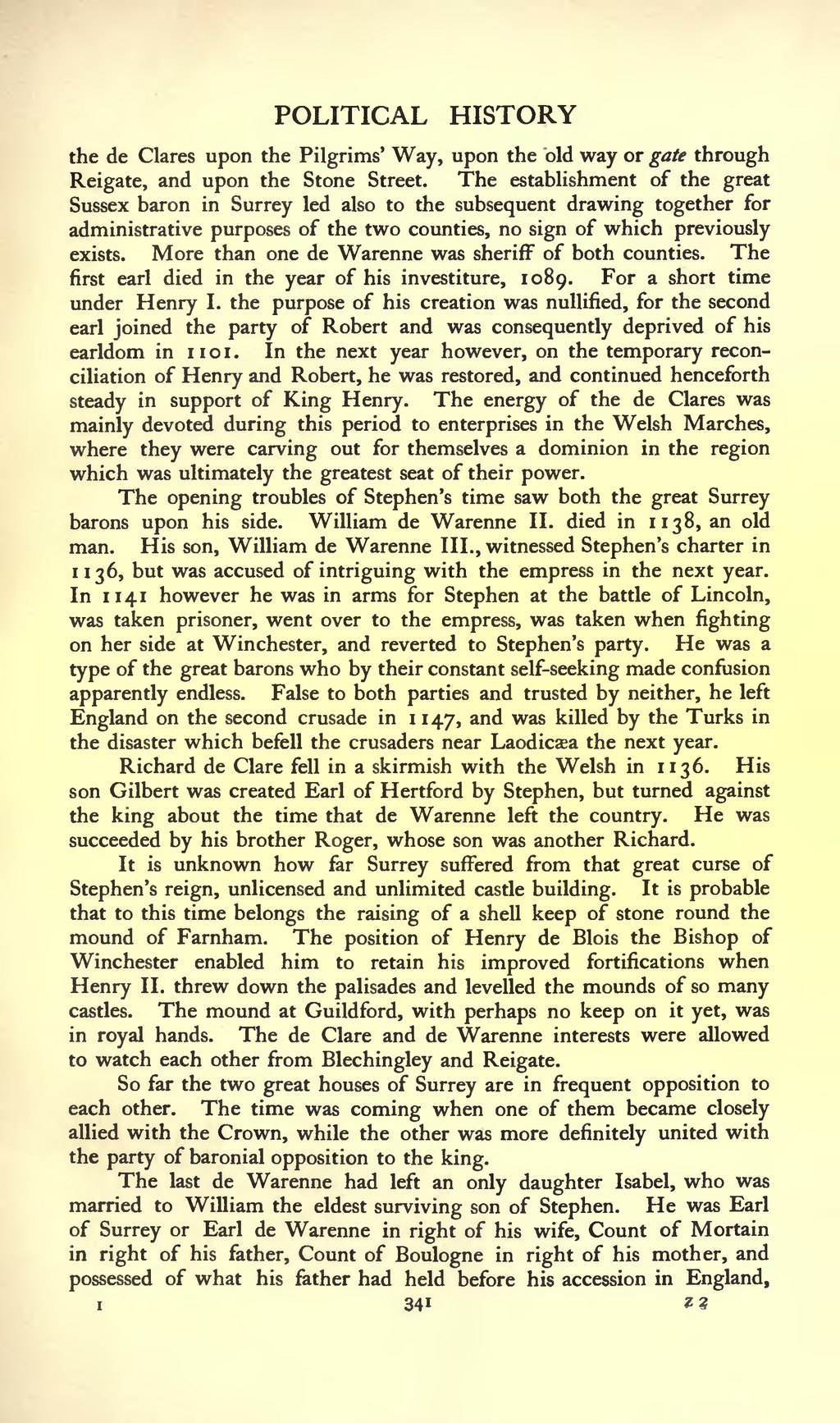POLITICAL HISTORY the de Clares upon the Pilgrims' Way, upon the old way or gate through Reigate, and upon the Stone Street. The establishment of the great Sussex baron in Surrey led also to the subsequent drawing together for administrative purposes of the two counties, no sign of which previously exists. More than one de Warenne was sheriff of both counties. The first earl died in the year of his investiture, 1089. For a short time under Henry I. the purpose of his creation was nullified, for the second earl joined the party of Robert and was consequently deprived of his earldom in 1 1 o i . In the next year however, on the temporary recon- ciliation of Henry and Robert, he was restored, and continued henceforth steady in support of King Henry. The energy of the de Clares was mainly devoted during this period to enterprises in the Welsh Marches, where they were carving out for themselves a dominion in the region which was ultimately the greatest seat of their power. The opening troubles of Stephen's time saw both the great Surrey barons upon his side. William de Warenne II. died in 1138, an old man. His son, William de Warenne III., witnessed Stephen's charter in 1136, but was accused of intriguing with the empress in the next year. In 1141 however he was in arms for Stephen at the battle of Lincoln, was taken prisoner, went over to the empress, was taken when fighting on her side at Winchester, and reverted to Stephen's party. He was a type of the great barons who by their constant self-seeking made confusion apparently endless. False to both parties and trusted by neither, he left England on the second crusade in 1 1 47, and was killed by the Turks in the disaster which befell the crusaders near Laodicaea the next year. Richard de Clare fell in a skirmish with the Welsh in 1136. His son Gilbert was created Earl of Hertford by Stephen, but turned against the king about the time that de Warenne left the country. He was succeeded by his brother Roger, whose son was another Richard. It is unknown how far Surrey suffered from that great curse of Stephen's reign, unlicensed and unlimited castle building. It is probable that to this time belongs the raising of a shell keep of stone round the mound of Farnham. The position of Henry de Blois the Bishop of Winchester enabled him to retain his improved fortifications when Henry II. threw down the palisades and levelled the mounds of so many castles. The mound at Guildford, with perhaps no keep on it yet, was in royal hands. The de Clare and de Warenne interests were allowed to watch each other from Blechingley and Reigate. So far the two great houses of Surrey are in frequent opposition to each other. The time was coming when one of them became closely allied with the Crown, while the other was more definitely united with the party of baronial opposition to the king. The last de Warenne had left an only daughter Isabel, who was married to William the eldest surviving son of Stephen. He was Earl of Surrey or Earl de Warenne in right of his wife, Count of Mortain in right of his father, Count of Boulogne in right of his mother, and possessed of what his father had held before his accession in England,
